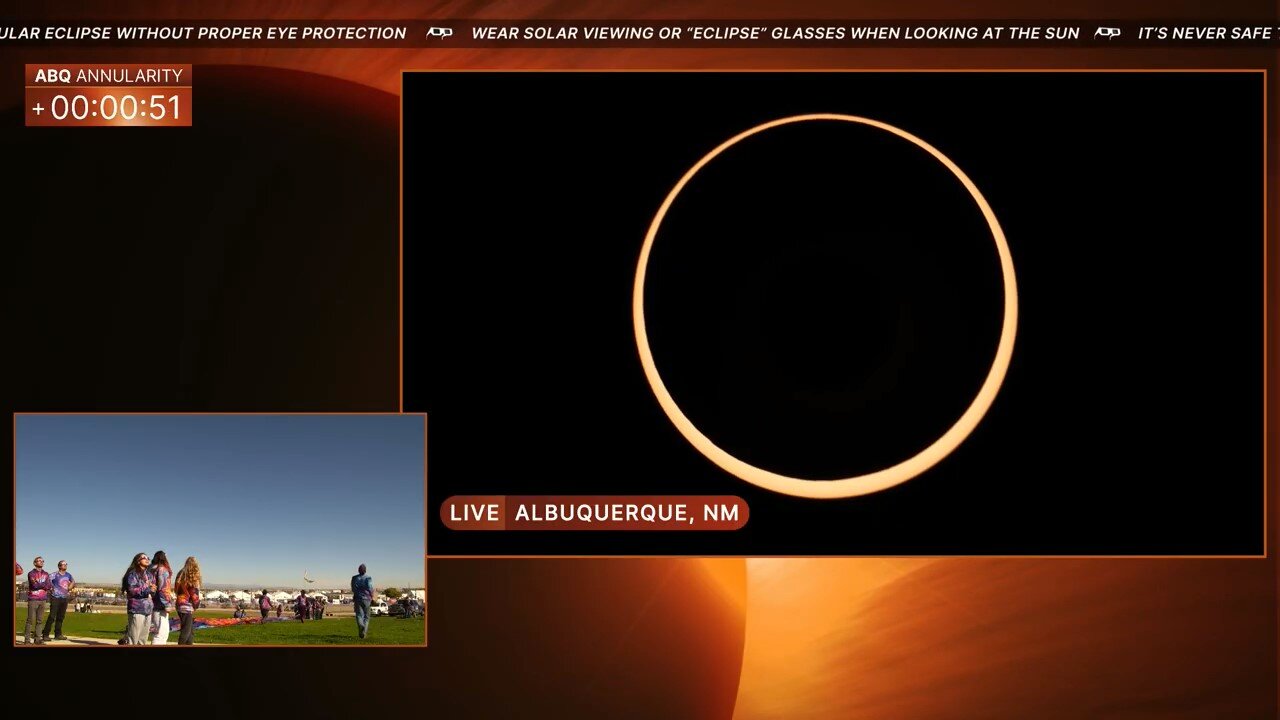Premium Only Content

The “Ring of Fire” Solar Eclipse
The "Ring of Fire" solar eclipse, also known as an annular solar eclipse, is a unique and stunning astronomical event that occurs when the Moon passes between the Earth and the Sun but doesn't completely cover the Sun's disk. Instead, it creates a bright, ring-like appearance, or "ring of fire," around the edges of the Sun. This happens because the apparent size of the Moon in the sky is smaller than that of the Sun, so it cannot completely block out the Sun's bright disk.
Several key features of a "Ring of Fire" solar eclipse include:
The Annular Phase: The eclipse begins as a partial solar eclipse, with the Moon gradually moving in front of the Sun. However, during the annular phase, which is the peak of the eclipse, the Sun's center remains uncovered, and a ring or annulus of sunlight surrounds the dark disk of the Moon. This ring is often referred to as the "Ring of Fire."
Path of Annularity: The "Ring of Fire" effect is only visible along a specific path on Earth. This path, known as the path of annularity, is relatively narrow and depends on the alignment of the Sun, Earth, and Moon. People within this path can witness the annular eclipse, while those outside the path will experience a partial solar eclipse.
Duration: The duration of the annular phase during a "Ring of Fire" eclipse can vary but typically lasts for a few minutes, with the entire eclipse event lasting a few hours as the Moon gradually moves across the Sun.
Eye Safety: Just like with any solar eclipse, it's essential to observe a "Ring of Fire" eclipse safely using proper eye protection, such as eclipse glasses or solar viewers. Looking at the Sun without protection can cause severe eye damage.
"Ring of Fire" solar eclipses are less common than total solar eclipses, where the Moon completely covers the Sun's disk, and they offer a captivating celestial spectacle. The appearance of a "Ring of Fire" eclipse can be particularly beautiful, with the bright ring contrasting against the dark silhouette of the Moon. These events are popular among astronomers, skywatchers, and photographers who seek to capture the striking visuals of this unique astronomical occurrence.
-
 LIVE
LIVE
The Mel K Show
1 hour agoMORNINGS WITH MEL K -This Labor Day Celebrate Liberty, Freedom & Family! 8-29-25
498 watching -
 LIVE
LIVE
The Shannon Joy Show
2 hours ago🔥🔥The Butchers At Hilo Benioff Hospital Hawaii - Mom Subjected To Forced C-Section & Abuse🔥🔥
306 watching -
 LIVE
LIVE
daniellesmithab
1 hour agoBetter, Faster, Smarter Access to Government Services
2 watching -
 LIVE
LIVE
LFA TV
6 hours agoLFA TV ALL DAY STREAM - FRIDAY 8/29/25
4,253 watching -
 LIVE
LIVE
Grant Stinchfield
19 hours agoEven DC’s Homeless Beg for Trump’s Law & Order — While Wacky White Liberal Women Scream NO!
144 watching -
 1:02:30
1:02:30
VINCE
3 hours agoGavin Newsom Is A Major Trump Fan | Episode 114 - 08/29/25
141K109 -
 1:32:10
1:32:10
Nikko Ortiz
3 hours agoPainful Life Experiences
17.2K7 -
 1:42:16
1:42:16
Dear America
4 hours agoThe Left Chooses TRANS Over Christianity!! WOKE Mayor Is Doubling Down!!
88.1K54 -
 LIVE
LIVE
Caleb Hammer
2 hours agoGaslighting. Toxic. B*tch. | Financial Audit
101 watching -
 LIVE
LIVE
Viss
2 hours ago🔴LIVE - Positioning, Tactics, Strategy How To PUBG! - PUBG 101
101 watching